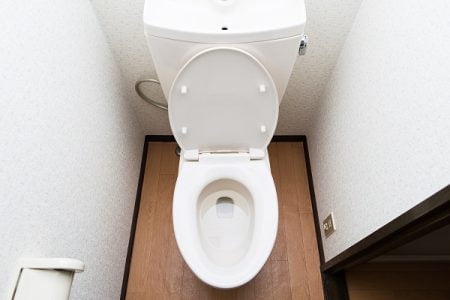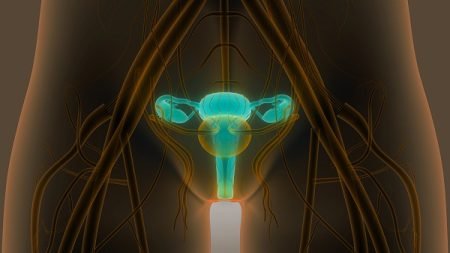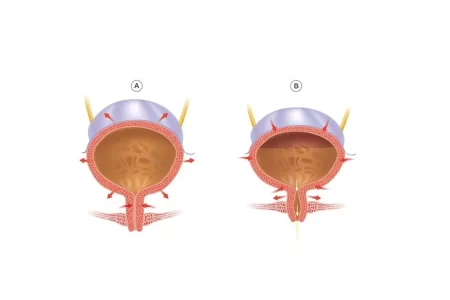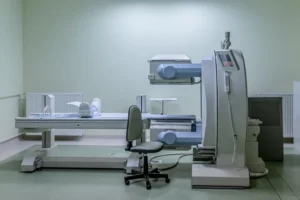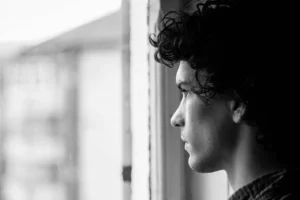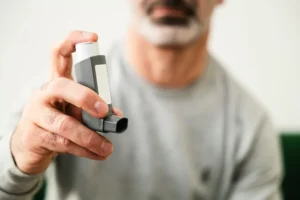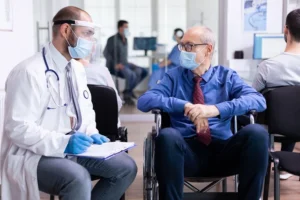Treatment of Urinary Incontinence
- Updated on: Jun 12, 2024
- 6 min Read
By
- Published on Oct 2, 2019
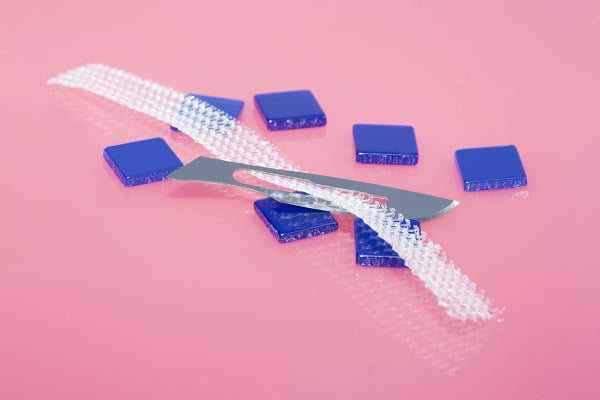

How is urinary incontinence treated?
Urinary incontinence is treated based on the type of incontinence experienced by the patient, the severity of the disease, and the underlying causes.
Urinary incontinence is not an inevitable part of aging. Therefore, it can be cured with proper guidance and suitable medications. First, the doctor will try the most non-invasive treatment (treatment that does not require any incision on the body of the patient). If these techniques fail, then only the doctor will proceed to other possible options.
Various treatment techniques are described below.
Behavioral techniques
This process uses several techniques to bring a change in the behavior of an individual. An unpleasant stimulus is used to reduce the unwanted behavior of the patient. The doctor may ask you to do the following:
Fluid and diet management
Certain things like caffeine and alcohol should be avoided. They increase the production of urine. Avoiding them may help regulate the overproduction of urine.
Drinking too much fluid also affects the bladder. Intake of fluid should be controlled.
It is believed that everything should be consumed in a regulated manner be it fluids or food. Spicy foods should be avoided since they irritate the bladder.
Bladder training
It involves changing urination habits to keep the situation under control. The time interval between each bathroom trip is increased a little bit. The patient may be asked to try to hold urine for say 10 minutes every time he feels an urge.
The goal is to lengthen the time between each bathroom trip to a minimum of 2.5 to 3.5 hours. Eventually, the patient learns how to delay the urination process.
Double voiding
It means completely voiding the bladder in two shifts. The patient is asked to urinate, then wait for a few minutes, and then urinate again. The bladder will be emptied. And there will be no dribbling or leakage.
Timed urination
It is the process of visiting the bathroom at regularly timed intervals. This helps the patient to gradually regain his control over bladder muscles.
Weight loss
Every person should have a healthy weight according to their height. With proper guidance from the doctor, the weight could be maintained. If the extra weight is reduced, it will surely decrease the pressure on your internal muscles of the bladder and they will work efficiently.
Avoiding constipation
We know that a tough bowel movement adds pressure over the bladder muscles and it also blocks the urine path. Therefore, constipation should be avoided. Add fiber to your diet which will help in easing the bowel movement.
Pelvic Floor Muscle Exercises
Pelvic floor muscle exercises are also known as “Kegal exercises”. Pelvic floor muscles are the muscles that control the flow of urine.
These exercises if done regularly, strengthen the muscles of the bladder. This helps in holding the bladder in place and also regulates the relaxation and contraction process.
These exercises can be done by following the procedure given here:
- First contract the pelvic muscles used to stop the urination process
- Hold for five seconds (if five seconds are too long in the beginning then, try with two seconds and gradually increase it to ten seconds)
- Relax for three seconds
- Repeat the same process three times a day
Gradually the patient will get a hold of his muscles.
Medications
Certain medicines are given to treat incontinence. These medicines are listed below:
- Mirabegron – It is used to treat overactive bladder. It relaxes the muscles of the bladder and increases the amount of urine the bladder can hold and release completely.
- Anticholinergics – It prevents spasms (sudden involuntary contraction of the muscle which initiates leakage) of the muscles of the bladder. The bladder will then not empty involuntarily and eventually, incontinence can be cured.
- Alpha-blockers – These medicines relax the smooth muscles of the bladder and improve the flow of urine.
- Topical estrogen – Topical estrogen is applied in the form of the vaginal cream. It rejuvenates the tissues of the vagina, decreases urinary tract infections, and increases the effect of medications on the bladder. It helps in regulating incontinence.
Electrical Stimulation
Electrical stimulation is used to treat urinary incontinence. In this process, a mild electric current is given to the pelvic muscles involved in urination with the help of electrodes. This process stimulates and strengthens the muscles. But it works efficiently only if the sessions are given for several months.
Medical Devices
These devices are designed to treat women with incontinence. These are described below:
Pessary
It is a plastic device in the shape of a ring that is inserted into the vagina. It helps in supporting the neck of the bladder, which lies near the vagina, and thus prevents urine leakage.
Urethral Insert
It is a disposable device that looks like a tampon. They are inserted into the urethra for a few hours. They prevent the involuntary leakage of urine. They should be removed before urination.
Absorbents
They can absorb or soak up anything. The absorbents used for urinary incontinence are given below:
Urine Seal
These are pad-like devices that are kept over the urethral opening. They create a seal and prevent urine leakage. They can be used before exercise or any physical activity. They should be removed before urination.
Catheter
A soft tube is inserted into the urethra to drain the bladder completely. It can be cleaned and reused.
Pads and protective garments
These garments can be worn under clothes like usual garments. They absorb the leakage. A drib collector is also used by men. It is a pocket of pad worn over the penis that absorbs the dribbling of urine.
Interventional Therapies
These are used in the treatment of urine retention (inability to completely empty the bladder) and urinary incontinence. These therapies are discussed below:
Nerve stimulators
A device that looks like a pacemaker is implanted under the skin (like a buttock). It provides an electric pulse to the nerves involved in the urination process. The stream of pulse stimulates the nerves and thus helps in controlling incontinence.
Bulking material injections
A bulking material is injected into the skin around the urethra. It helps in closing the urethra and thus reduces the leakage.
Surgery
Surgery is the last option. It is used when no other method has cured the incontinence. Some of the methods used by doctors are given below:
Sling procedures
A pelvic sling is made out of the patient’s body tissue and is used around the urethra and bladder neck (the area where the bladder connects to the urethra). In a certain situation like coughing and sneezing, the sling helps keep the urethra closed and prevent leakage.
Bladder neck suspension
It provides support to the urethra and bladder neck. It involves an abdominal incision. It is used to bring the bladder to its original position from the sagging position.
Prolapse surgery
A urethral sling is given to women to reduce incontinence by using prolapse surgery. The bladder and the urethra are repaired which eventually strengthens the muscles. It is done when the muscles of the pelvic region weaken.
Artificial urinary sphincter
An artificial sphincter is a device made up of silicone rubber. It consists of a cuff that fits around the urethra and bladder neck. It keeps the urinary sphincter (muscle used to control the exit of the urine) closed when the patient is not ready to urinate. This cuff regulates the flow of urine. The cuff is inflated to prevent leakage and deflated to allow the urination process. To urinate, a valve is pressed that is implanted under the skin of the patient.
FAQs
Are medications the primary treatment for urinary incontinence?
Medications are one treatment option, but management strategies also include pelvic floor exercises, lifestyle changes, and, in some cases, surgical interventions, depending on the underlying cause.
How effective are pelvic floor exercises in treating urinary incontinence?
Pelvic floor exercises, like Kegels, are often highly effective in strengthening muscles and improving bladder control. Consistency and proper technique are crucial for optimal results.
Can surgical procedures completely cure urinary incontinence?
Surgical interventions can provide significant improvement or cure, depending on the type and severity of urinary incontinence. It's essential to discuss the potential outcomes and risks with a healthcare provider.
Are there natural remedies for managing urinary incontinence?
Yes, natural remedies like herbal supplements, acupuncture, and dietary changes may help manage symptoms. However, it's important to consult with a healthcare professional before trying alternative treatments.
Can menopausal hormone therapy help with urinary incontinence?
Menopausal hormone therapy may alleviate symptoms in some women by addressing hormonal imbalances affecting the bladder. However, the decision to pursue this therapy should be made in consultation with a healthcare provider.





